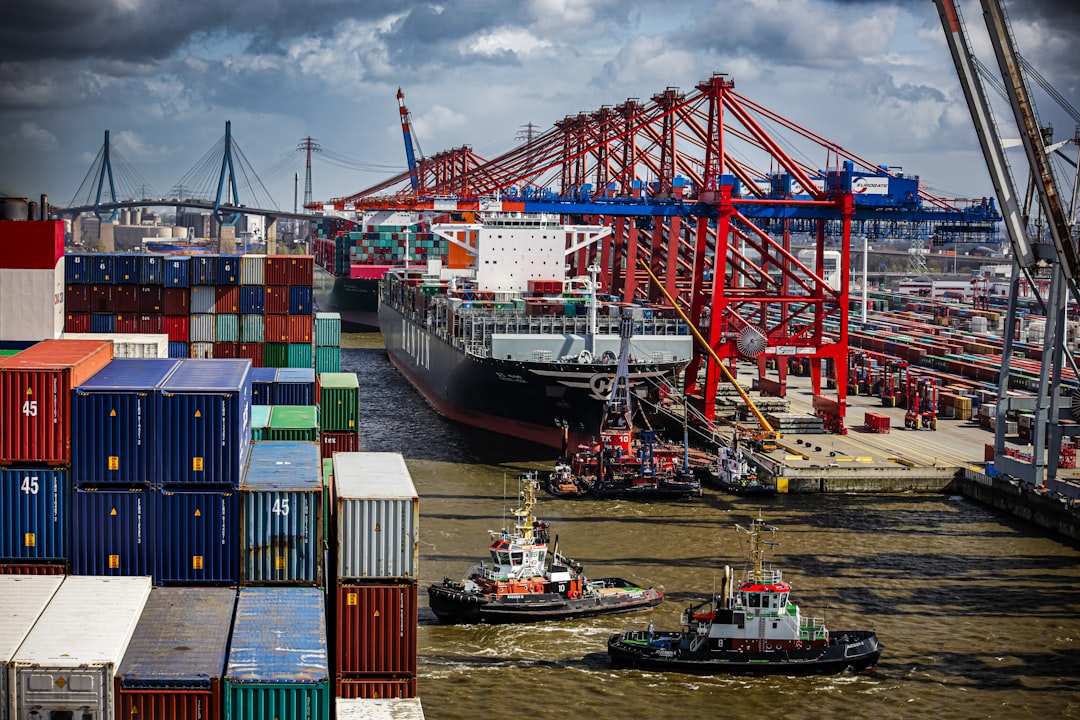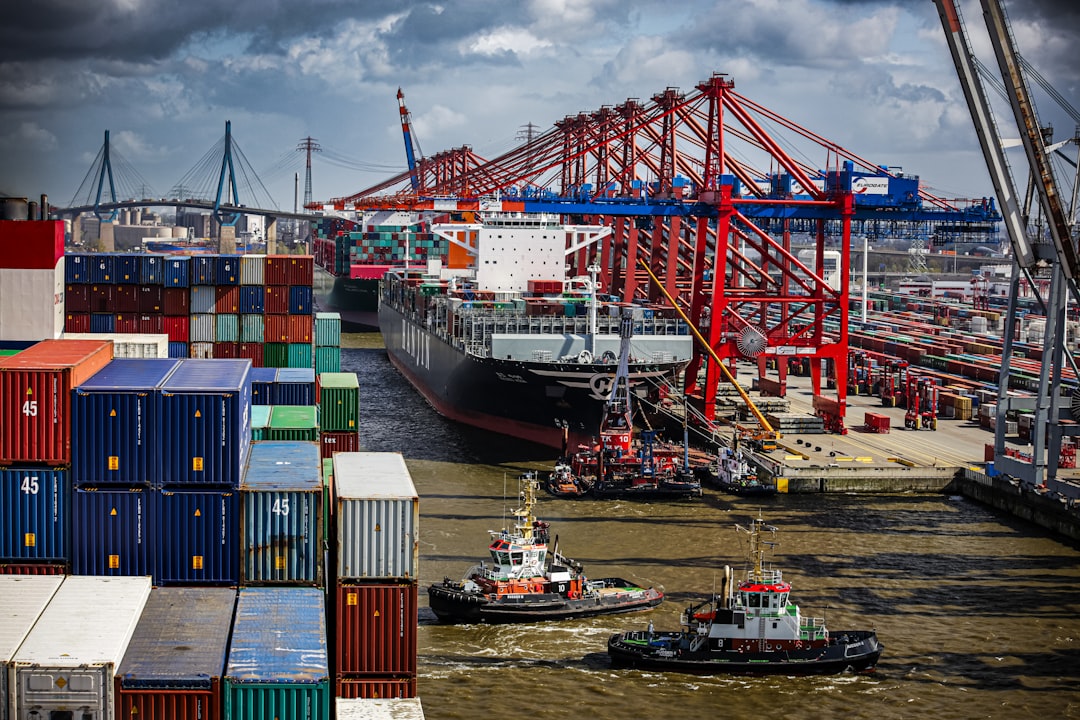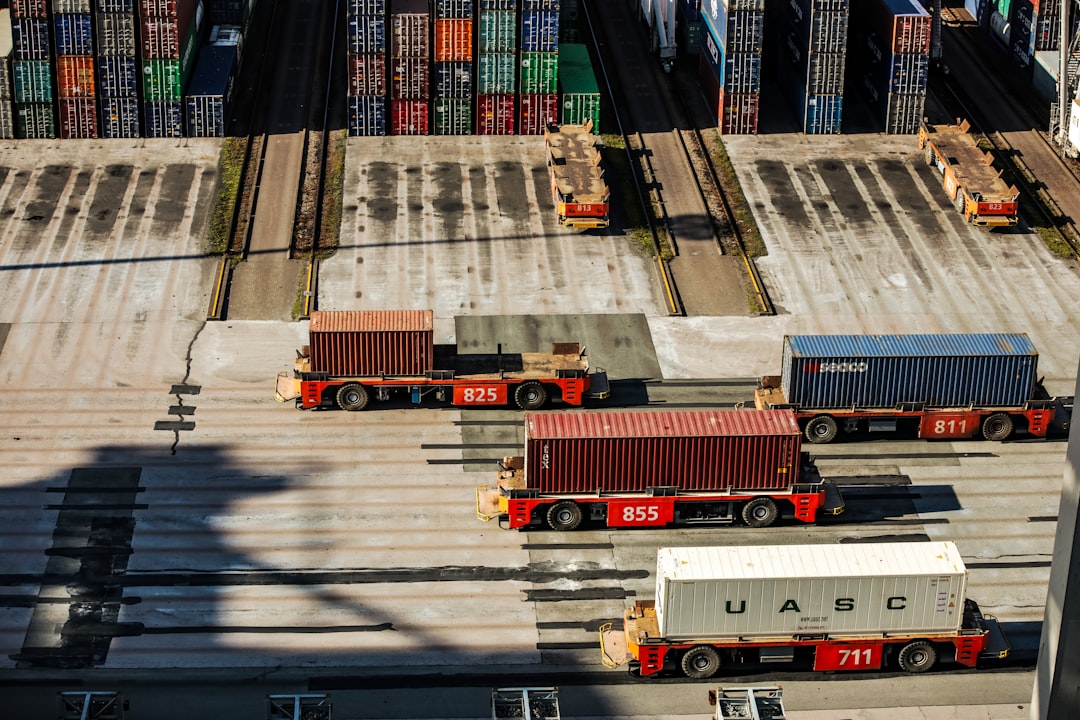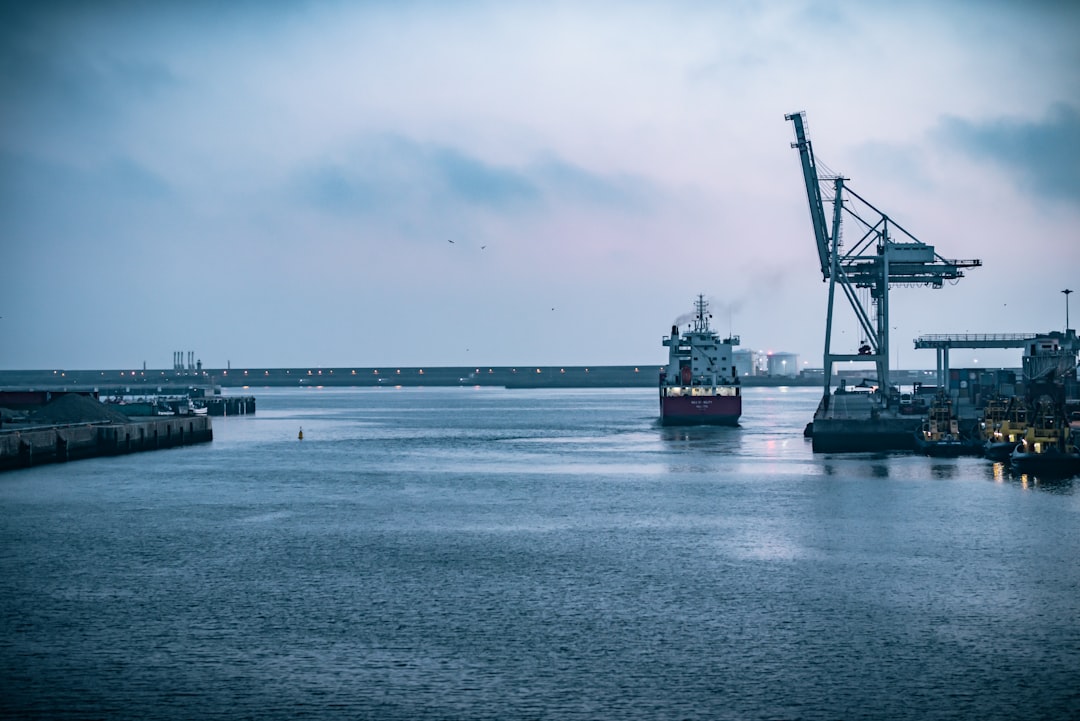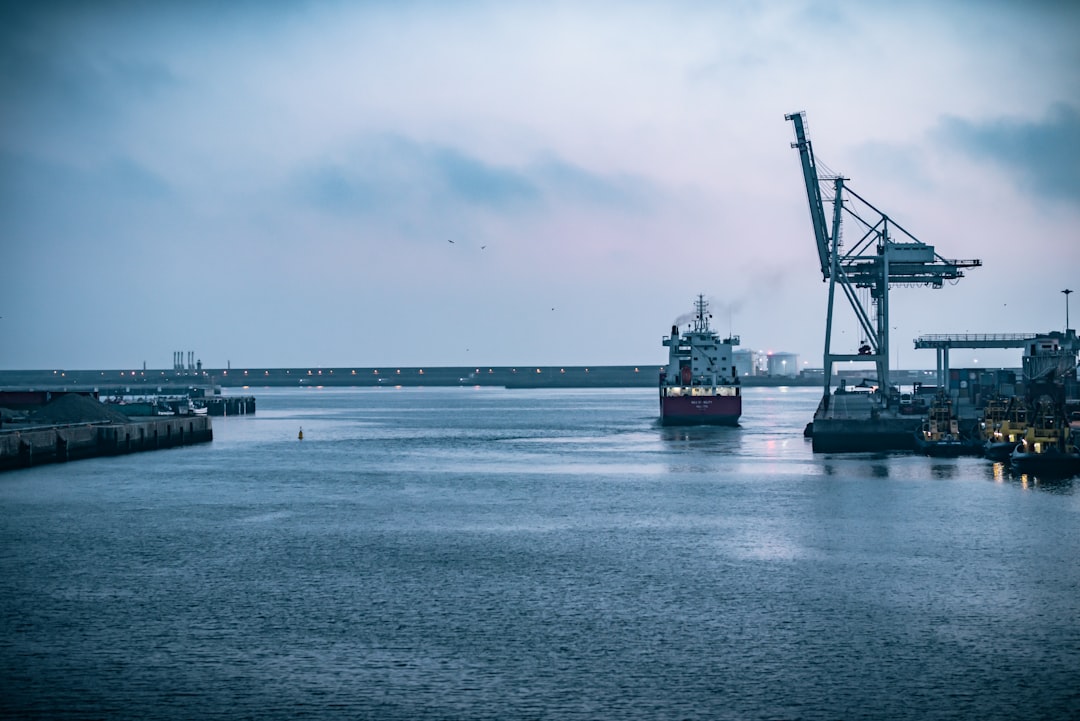Global Trade Compliance in 2024 Navigating New Regulatory Challenges Amidst Geopolitical Tensions
Global Trade Compliance in 2024 Navigating New Regulatory Challenges Amidst Geopolitical Tensions - BRICS Expansion Reshapes Global Trade Landscape
The expansion of BRICS, encompassing Argentina, Egypt, Ethiopia, Iran, Saudi Arabia, and the UAE, marks a significant turning point in the global trade arena. This expanded bloc will now account for a substantial portion of global economic activity, holding roughly 30% of global GDP and controlling a major share of oil production at 43%, directly challenging the influence previously held by the G7. The growing economic clout of BRICS raises concerns about the continued dominance of the US dollar in global commerce, potentially leading to the development of alternative financial systems and trade practices within the group. This shift towards a more multipolar economic order necessitates a reassessment of existing trade regulations and compliance frameworks. Businesses and governments need to adapt to this changing landscape as it creates new challenges and opportunities, particularly amidst the existing geopolitical tensions that continue to shape international relations. The evolving influence of BRICS will undoubtedly demand careful attention and a proactive approach from stakeholders involved in global trade.
The recent expansion of BRICS, encompassing Argentina, Egypt, Ethiopia, Iran, Saudi Arabia, and the UAE, has profoundly altered the global trade landscape. This expanded bloc now represents nearly 40% of the world's population, indicating potential shifts in trading patterns and product demand across industries. It's also noteworthy that the collective GDP of these new members is on par with that of the G7, implying a more balanced global economic distribution and a challenge to traditional economic dominance.
The addition of resource-rich nations could significantly reshape global supply chains, particularly within the energy and raw materials sectors. The prospect of resource redistribution is compelling, as BRICS explores options for leveraging the resources of its member states. Furthermore, BRICS's deliberations regarding a unified currency pose a question mark for the future of the US dollar in global trade. It's uncertain what impact this shift could have, if any, on dollar-denominated transactions.
There's increasing interest within BRICS to create unified digital trade frameworks, which could spur innovation in e-commerce regulations. Harmonizing trade policies across the member nations presents an interesting technical challenge. However, existing global trade compliance frameworks may struggle to adapt to the unique regulatory and legal landscapes of the newly joined BRICS countries, potentially creating complications for international commerce.
The influence of BRICS on international organizations is expected to increase, and they may advocate for reforms better aligned with the interests of emerging markets. This is likely to lead to a dynamic renegotiation of international decision-making processes. Meanwhile, heightened geopolitical tensions are expected as established global powers respond to BRICS's growing economic clout. Businesses operating in these newly influential markets should anticipate increased regulatory scrutiny and compliance requirements.
The intricate web of economic relationships within the BRICS group could lead to the development of new preferential trade agreements. These agreements have the potential to significantly affect global tariff structures and future trade negotiations. As BRICS members strive to foster greater economic collaboration, the emergence of new trade compliance standards centered on collective security is possible, potentially influencing how global trade regulations evolve over the next few years. This could introduce unforeseen trade compliance complications and a new set of rules and regulations.
Global Trade Compliance in 2024 Navigating New Regulatory Challenges Amidst Geopolitical Tensions - Technology Adoption Crucial for Trade Resilience
In today's global trade environment, marked by geopolitical instability and evolving regulations, businesses are finding that technology adoption is no longer a choice but a necessity for trade resilience. The current climate demands that companies prioritize technology solutions to bolster efficiency, mitigate risk, and adapt to the increasingly complex rules and regulations governing global trade. Utilizing technologies like artificial intelligence can streamline compliance procedures and strengthen supply chains against disruptions. Companies that fail to integrate these innovations risk falling behind in a rapidly evolving market. They could face growing challenges in compliance, cybersecurity, and adapting to shifts in market demands, ultimately threatening their long-term competitiveness. With the rise of digital trade, the need for innovative and robust technology solutions is growing, making it essential for businesses to rethink their existing strategies and embrace technological advancements.
The increasing interconnectedness of global trade, particularly in light of the evolving BRICS landscape, highlights the urgent need for businesses to integrate technology into their operations. It's fascinating how research suggests that adopting technology in trade can lower compliance costs considerably, possibly by as much as 30%, demonstrating a direct correlation between technological innovation and operational efficiency.
The potential of blockchain in global commerce is striking, with predictions suggesting over 40% of global trade documents could be digitized by 2025. This push towards transparency and supply chain traceability using blockchain technology is interesting but also raises concerns. It’s not always clear whether these technologies are truly ready to handle the scale of global trade, and in a way, it's a race against the clock.
Artificial intelligence (AI) is another intriguing development in trade compliance. Research indicates it can improve risk assessments by a significant margin—perhaps up to 85%. It’s fascinating to imagine the future of trade compliance with AI-driven decision-making, but there's a risk of bias and ethical dilemmas we need to consider.
However, this increased digital reliance in trade exposes businesses to greater cyber threats, with a substantial portion—upwards of 60%—of trade organizations reporting being targeted by cyberattacks. Balancing innovation with robust cybersecurity measures is vital, and the pace of technology adoption can't outpace the development of reliable safeguards.
Unfortunately, regulations often lag behind technological advancements. Regulatory bodies might take over two years to adapt, creating a compliance gap businesses need to bridge. This delay can slow down innovation as businesses grapple with changing rules.
Implementing automated reporting systems is another area where technology shows promise. It seems they can significantly reduce errors in compliance reports, by perhaps up to 70%. This is a promising development for streamlining compliance, but again, the challenge is to ensure that the technology remains reliable and secure.
With e-commerce booming and projected to reach 25% of global retail sales by 2026, it’s clear that tailored compliance measures are needed for cross-border online transactions. Designing solutions for online trade while upholding physical goods compliance will be a complex challenge.
The significance of technology in achieving supply chain visibility can't be understated. Companies that use technology for this purpose are much more likely to proactively address compliance issues—perhaps 30% more likely. However, whether this is truly achievable for all businesses in the global supply chain remains to be seen.
Advanced trade data analytics also seems promising for identifying and mitigating risks, with some businesses reporting an improvement of 50%. However, it's important to acknowledge that this level of improvement might be easier for larger companies with more resources.
Sadly, even with these compelling advantages, many smaller businesses still face challenges. About 45% of small and medium-sized enterprises (SMEs) point to the cost of adopting technology as a major obstacle, highlighting a significant gap between the technological capabilities of large corporations and smaller players. It's a significant hurdle that needs to be addressed to ensure fair access to these benefits for all businesses. The path forward for the future of trade will likely involve finding innovative ways to make these technological advancements more accessible to all participants in the global trade network.
Global Trade Compliance in 2024 Navigating New Regulatory Challenges Amidst Geopolitical Tensions - US-China Trade Tensions Necessitate Strategic Shifts
The escalating trade friction between the US and China, ongoing since 2018, is forcing businesses involved in global trade to make fundamental adjustments to their strategies. The relationship has been marked by a series of tariffs, protectionist measures, and a fluctuating trade balance, resulting in a complex environment. Businesses are now under pressure to diversify their supply chains and reconsider their market access plans. This is further complicated by ongoing geopolitical issues, including China's actions in areas like the South China Sea and Taiwan, as well as the ripple effects of the Russia-Ukraine conflict. The evolving US-China dynamic is influencing economic relations and leading to a reassessment of global trade regulations and compliance requirements, including a heightened awareness of potential sanctions and increased scrutiny from enforcement agencies. The impact of these tensions stretches beyond economics, potentially shaping geopolitical and compliance landscapes in significant ways.
The trade friction between the US and China, escalating since 2018, continues to reshape global commerce. While a "Phase One" trade deal was reached in 2020, tensions persist, marked by significant tariffs and protectionist measures. This trade war has triggered a wave of supply chain adjustments as companies try to reduce their reliance on Chinese production. Manufacturing is migrating to Southeast Asia, driven by concerns over geopolitical instability, with projections suggesting a potential 25% surge in the region's manufacturing capacity by 2025.
The costs of this trade conflict are becoming increasingly apparent, with consumer goods experiencing substantial price increases. For example, studies indicate electronics imported from China have seen a 20% rise in cost, reflecting the impact of tariffs on retail markets. The semiconductor sector exemplifies the high stakes involved, with nearly $500 billion projected to be invested in reshoring production to lessen reliance on China.
Interestingly, the shift in trade dynamics is also pushing companies toward emerging markets. Companies relying on advanced technologies have reported a significant increase in their research and development investments in countries like Vietnam and India, likely seeking to build resilience amidst trade uncertainties. This growing trend indicates that businesses are re-evaluating their global operational strategies to navigate the changing landscape.
The added regulatory complexity and increased scrutiny associated with the ongoing trade tensions are impacting business costs. Data suggests roughly 35% of businesses involved in international trade have encountered increased compliance costs. These rising costs directly correlate to the growing tension between the US and China.
In response to the heightened trade war, the US has actively promoted a "friend-shoring" strategy, prioritizing trade with politically aligned countries. This emphasizes a shift towards trade diversification, with over 40% of businesses shifting their supply sources to include these allied nations. This trend is coupled with a decline in US exports to China – falling over 20% between 2020 and 2023. This decline clearly reflects companies adjusting their trade strategies in response to geopolitical tensions.
The growing role of digital trade is evident, as businesses recognize the importance of technology in adapting to these regulatory challenges. Evidence suggests that businesses investing in technology to enhance their compliance capabilities can significantly reduce operational risks by up to 30%.
Increased sanctions tied to the trade tensions have triggered a substantial rise in legal compliance expenses. Businesses are allocating nearly 50% more towards compliance measures in 2024 compared to previous years. This reflects the urgency in upgrading and adapting internal controls.
Companies are actively adopting tools to navigate the volatile tariff landscape. It's been noted that a significant 70% of importers are increasingly employing advanced monitoring software to ensure consistent compliance with changing tariff structures. This shows the growing use of technology to inform strategic trade decisions within this challenging environment.
The broader implications of this US-China trade tension extend beyond economics and impact geopolitical and environmental considerations. The uncertainty caused by this relationship necessitates a more cautious and adaptable approach to global trade, requiring a deep understanding of evolving regulatory landscapes and the associated compliance requirements.
Global Trade Compliance in 2024 Navigating New Regulatory Challenges Amidst Geopolitical Tensions - Supply Chain Professionals Grapple with Sanctions Compliance
Supply chain professionals are facing growing challenges in 2024 as they navigate the increasingly complex world of sanctions compliance. Geopolitical tensions and evolving regulations are forcing companies to rethink their sourcing strategies, prioritizing both supply chain resilience and strict adherence to new compliance standards. This shift is driven by factors like escalating conflicts and changes in regulatory demands, placing a greater emphasis on demonstrating compliance, especially related to issues like forced labor. The burden of proof for compliance has shifted significantly towards businesses, making it vital to stay informed about the ever-changing lists of sanctioned individuals and entities. Furthermore, the increased scrutiny from US regulators like the Securities and Exchange Commission and the Department of Justice is pushing companies to strengthen their internal compliance programs and take a proactive stance to avoid hefty penalties and disruptions to their supply chains.
The expanding BRICS bloc, now encompassing 11 nations, presents a complex landscape for supply chain professionals. The diverse regulatory environments across these countries often clash with existing international trade norms, leading to a challenging web of compliance obligations for businesses. It's fascinating how the regulatory shift has broadened the scope of screening responsibilities. Companies are no longer solely responsible for vetting their immediate customers, but must also scrutinize intermediaries and partners, greatly increasing the complexity of due diligence and compliance verification.
The potential consequences of non-compliance with sanctions and export controls have become much more severe, with hefty fines reaching into the millions of dollars. This amplified risk underscores the importance of trade compliance in the current geopolitical climate. It seems there's an accelerating trend towards technology-driven compliance solutions, with data suggesting that a large portion of trade organizations are investing in automated systems to simplify the process of monitoring sanctions and export controls.
However, there's a noticeable gap between the rapid pace of technological advancement and the ability of regulatory bodies to adapt. It's a fascinating observation that regulatory bodies can lag behind by over two years, leading to a compliance lag. This creates risks for businesses trying to keep up with constantly evolving compliance standards. The ongoing US-China trade tensions are transforming global supply chains, as companies diversify their sources. Estimates suggest a considerable increase in Southeast Asia's manufacturing capacity by 2025.
The growing digitalization of trade compliance is raising the specter of cyber threats. Nearly 60% of trade organizations report facing cyberattacks, which is a concerning development. Balancing the benefits of technological innovation with the imperative of ensuring robust cybersecurity measures is a major challenge. The intensified enforcement efforts from US regulatory agencies have led to an increase in compliance costs, affecting a substantial number of businesses involved in international trade. It's notable that many businesses are now shifting their supply chains towards countries with aligned political interests, which I find to be an interesting strategic response to the desire for greater compliance assurance and stability.
Businesses heavily reliant on advanced technologies are significantly increasing their R&D investments in countries like Vietnam and India, demonstrating a proactive approach to navigating the geopolitical complexities that affect global trade relations. This dynamic illustrates the interconnectedness of geopolitics, economics, and the need for strategic agility in today's trade environment. It appears that the new BRICS expansion and other geopolitical tensions are significantly redefining the landscape of global trade and challenging the traditional assumptions of how supply chains and compliance procedures function.
Global Trade Compliance in 2024 Navigating New Regulatory Challenges Amidst Geopolitical Tensions - Geopolitical Risks Influence Freight Rates and Dollar Dominance
Geopolitical events, including the pandemic and ongoing conflicts, have significantly impacted global trade and continue to reshape freight rates and the US dollar's dominance in international finance. Nations are rethinking their trading relationships, prioritizing national security and economic stability over traditional alliances, leading to shifts in foreign investment and potential challenges to the US dollar's supremacy. Increased scrutiny over sanctions and trade regulations, coupled with supply chain disruptions, has inevitably pushed shipping costs higher. Simultaneously, climate-related geopolitical events are growing in significance, posing new challenges to trade routes and global stability. Companies operating in this environment need to carefully adjust their strategies to manage not just the economic implications of these risks, but also the evolving regulatory complexities they bring. This necessitates continuous monitoring of the shifting geopolitical landscape and proactive measures to ensure compliance with evolving trade rules.
Since the pandemic and the war in Ukraine, nations are reassessing their trading partners based on economic and security concerns. This has led to a reshaping of foreign investment patterns, influencing how countries relate to each other economically. Some countries are starting to consider using currencies other than the US dollar for international transactions and reserves, which is an interesting development.
Climate change is expected to be a major geopolitical challenge in 2024, potentially causing significant problems for national security and global stability. We've seen that political instability can disrupt oil prices and freight rates. There's a notable link between oil prices and shipping costs (measured by the Baltic Dry Index) when they're influenced by geopolitical risks.
Geopolitical events create a lot of challenges for global supply chains. We need new research and strategies to understand and manage these disruptions better. Events like elections, political division, and conflicts contribute to global economic uncertainty and have negative consequences for specific countries.
It's predicted that AI and ocean-related issues will become important in global competition and regulation this year. Studies show that geopolitical instability and uncertainty in economic policy are linked to higher shipping freight rates, impacting the logistics and supply chain industries. Research indicates that geopolitical risks can significantly increase trade costs. This highlights the importance of dealing with these risks if we want to keep global trade flowing smoothly.
It seems clear that the ongoing shifting alliances and economic uncertainties are influencing shipping rates and the role of the US dollar in global commerce. It's like trying to navigate a sea of constantly shifting currents. These events force us to consider whether or not the long-standing dominance of the US dollar is sustainable in the context of these changes. The need to be aware of emerging trade routes and the challenges these changes can pose to supply chain efficiency, and also managing the costs related to sanctions and export compliance, is becoming even more important.
It's fascinating to see the way technology is being applied as a response to this instability. Companies are turning to advanced data analytics and automated compliance systems to help them respond quickly to changing regulations. It appears that technology is not only helping companies manage their risks but is also opening the door to increased cybersecurity risks related to the increased digitization of trade operations.
Furthermore, the ongoing shifts in global alliances, particularly with the expansion of BRICS, seem to be impacting how companies think about sourcing and managing their supply chains. Businesses are now actively diversifying, reducing the reliance on specific countries or regions. It's clear that the legal and regulatory implications of this changing environment are growing, with larger fines and more active prosecution for companies that fail to meet the compliance standards. This complex interplay of global events is really forcing a reconsideration of what it takes to manage risk and navigate trade successfully in the modern world.
More Posts from financialauditexpert.com:
- →International Tax Experts Navigate OECD's 2024 Transfer Pricing Guidelines Update
- →Deloitte's 2023 Holiday Calendar Balancing Employee Well-being and Financial Performance
- →The Evolving Landscape of Business Analyst Jobs in the USA 2024 Salary Trends and Remote Work Opportunities
- →The Financial Impact of Effective Application Service Management on Enterprise IT Costs
- →Establishing a Financial Audit Center of Excellence Key Strategies for 2024
- →Digital Lean Manufacturing Quantifying the Financial Impact of Industry 40 Integration in 2024
